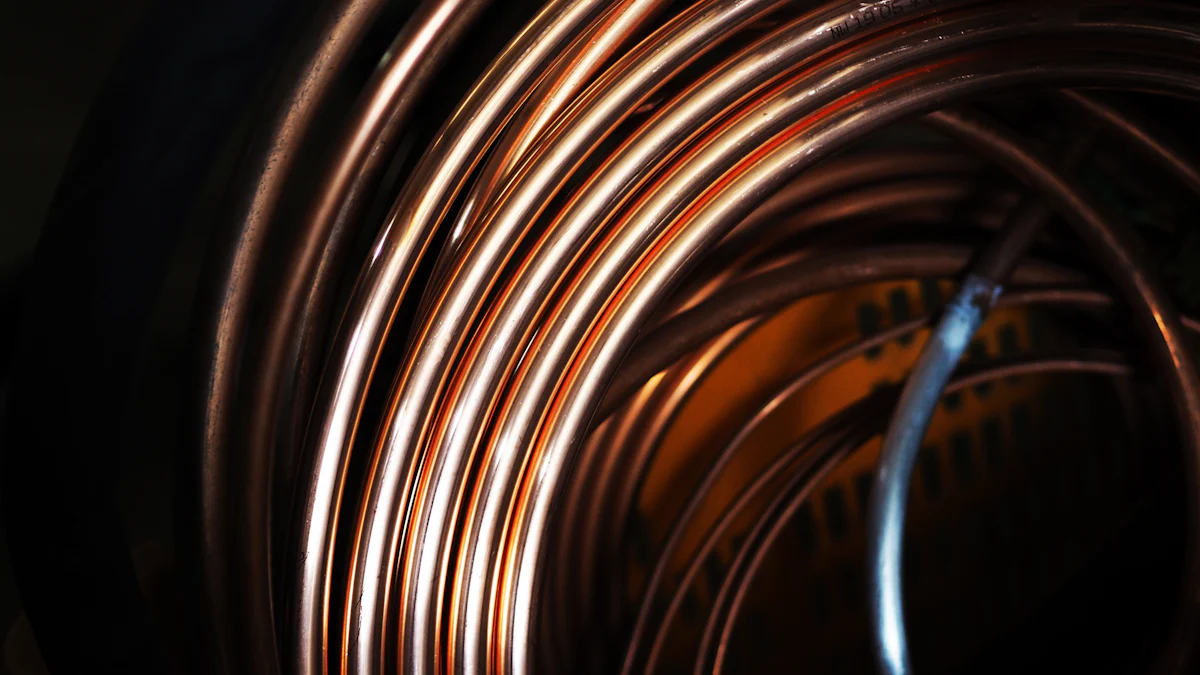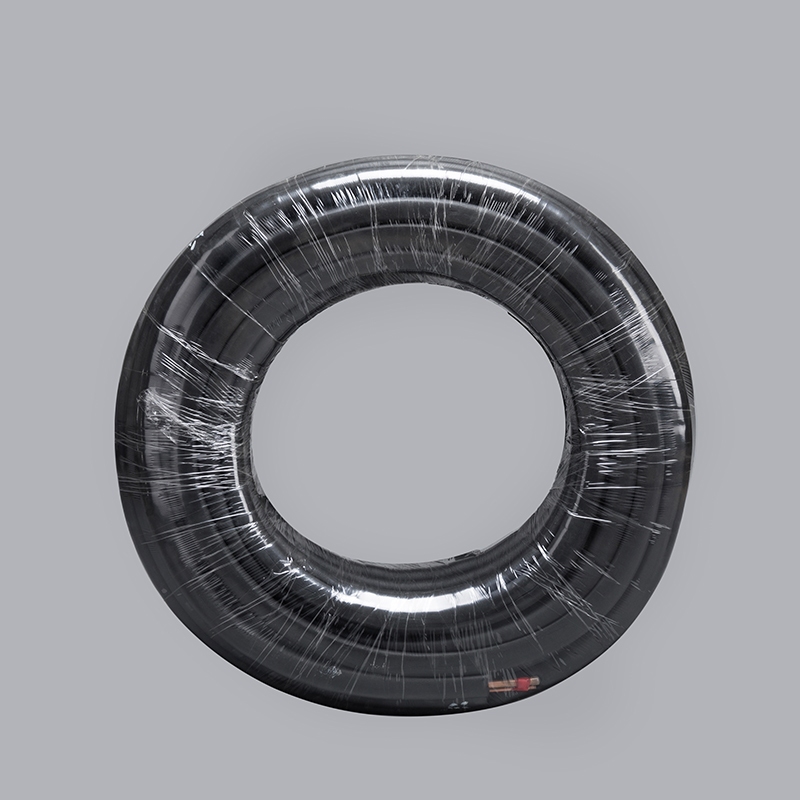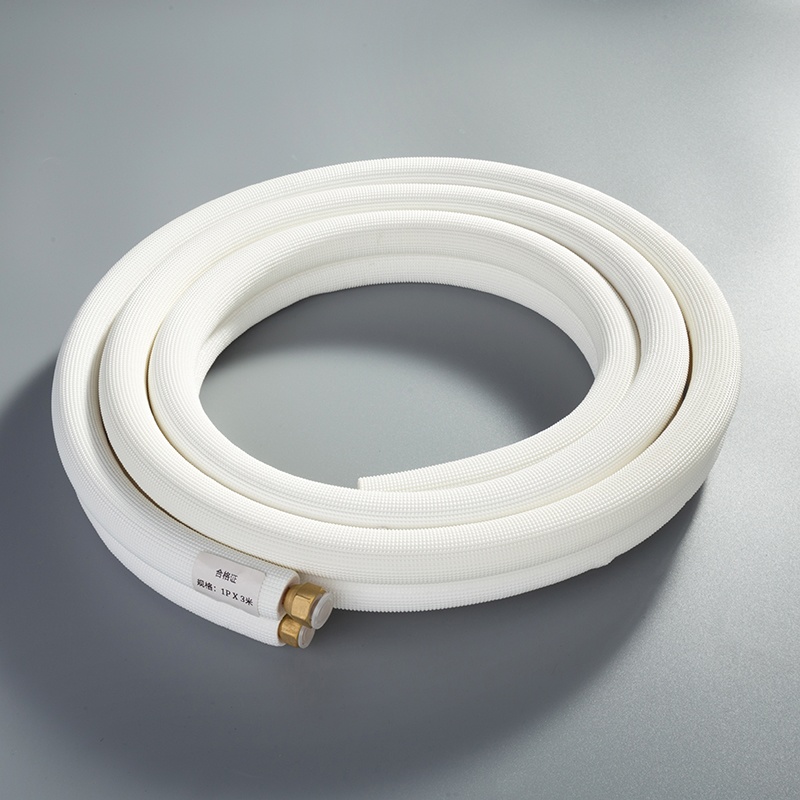5 Steps to Securely Install Copper Pipe Coils at Home

To ensure a safe installation process, it is crucial to follow the correct procedures when setting up a safety guide for installing 1/4 3/8 twin copper pipe coils in residential areas. Understanding the overview of the steps involved will help you navigate through the process smoothly. Safety is paramount throughout this installation journey, emphasizing the need for caution and precision at every step.
Prepare for Installation

When embarking on the installation journey of a safety guide for installing 1/4 3/8 twin copper pipe coils in residential areas, it is essential to start by gathering the necessary tools and materials. This process ensures that you have everything at hand to proceed smoothly with the installation.
Gather Tools and Materials
To begin, ensure you have all the required tools for the installation:
Copper Pipe Working Tools: These tools are specifically designed for working with copper pipes, ensuring precision and efficiency.
Pipe Cutter: A pipe cutter will help you cut the copper pipe to the needed length accurately.
Deburring Tool or Sandpaper: This tool is crucial for removing any burrs from the cut pipe, ensuring a smooth surface.
Next, gather all the materials needed for setting up the copper pipe coils:
Copper Pipe Coils: The main component of your installation project.
Compression Fittings or Brazing Equipment: Essential for securely joining the pipes together.
Insulation Material: To insulate and protect the installed pipes effectively.
Inspect Copper Pipe Coils
Before proceeding with the installation, thoroughly inspect the copper pipe coils:
Check for any leaks along the coils that could lead to potential issues during operation.
Examine the coils carefully for damages or defects that might affect their performance.
Write a Safety Guide for Installing 1/4 3/8 Twin Copper Pipe Coils in Residential Areas
As you prepare to install these copper pipe coils, remember to:
Follow the manufacturer’s manual meticulously to ensure a safe and accurate setup.
Maintain proper ventilation around the area where you are installing the coils to prevent overheating.
By following these initial steps diligently, you set a strong foundation for a successful and secure installation process of a safety guide for installing 1/4 3/8 twin copper pipe coils in residential areas.
Install the Copper Pipe Coils

To ensure a safe installation process of a safety guide for installing 1/4 3/8 twin copper pipe coils in residential areas, it is vital to handle the coils with care and precision. Safety should always be a top priority when working with these materials.
Handle the Coils Safely
Begin by wearing protective gear before handling the copper pipe coils. This gear will safeguard you from any potential hazards during the installation process. Remember, safety first!
Avoid any unnecessary bending of the coils as this could lead to damage or leaks in the future. Keeping them straight and intact ensures a secure setup for your residential area.
Connect the Coils Securely
When connecting the coils, make sure to use proper fittings that are compatible with copper pipes. These fittings play a crucial role in ensuring a tight and secure connection between each coil, preventing any leaks or malfunctions.
Tighten all connections diligently to eliminate any chances of loose ends or gaps that could compromise the integrity of your installation. A secure connection guarantees a reliable and efficient operation of your copper pipe coils.
Write a Safety Guide for Installing 1/4 3/8 Twin Copper Pipe Coils in Residential Areas
Prioritize following electrical safety guidelines throughout the installation process. Electrical components should be handled with caution and expertise to prevent any accidents or mishaps.
Maintain adequate clearance around the installed copper pipe coils to allow for proper ventilation and heat dissipation. Adequate clearance ensures optimal performance and longevity of your residential piping system.
Final Checks and Maintenance
Inspect the Installation
Check for leaks again:
To ensure the integrity of your installation, conduct a thorough inspection to identify any potential leaks that may have occurred during the setup process.
Look closely at all connection points and along the length of the copper pipe coils to detect any signs of leakage.
Address any leaks promptly to prevent water damage or operational issues in your residential area.
Ensure all connections are tight:
Verify that all connections between the copper pipe coils are securely tightened to prevent any loosening over time.
Use appropriate tools to check the tightness of fittings and joints, ensuring a reliable and leak-free installation.
Tightening connections is essential for maintaining the efficiency and safety of your residential piping system.
Regular Maintenance
Schedule inspections:
Establish a routine schedule for inspecting your installed copper pipe coils to detect any potential issues early on.
Regular inspections help identify leaks, damages, or wear and tear that may compromise the performance of your piping system.
By scheduling periodic checks, you can address maintenance needs promptly and ensure the longevity of your installation.
Address issues promptly:
Act swiftly upon discovering any issues during inspections to prevent further damage or safety hazards.
Prioritize addressing leaks, loose connections, or damaged components to maintain the efficiency of your residential piping system.
Promptly resolving maintenance issues contributes to a safe and reliable operation of your copper pipe coils.
Emergency Procedures
Outline emergency steps:
In case of emergencies such as leaks or malfunctions in your copper pipe coils, it is crucial to have clear emergency procedures in place.
Provide contact information:
Ensure that relevant contact information for plumbing professionals or emergency services is readily available in case immediate assistance is required.
Regular maintenance and thorough inspections play a vital role in ensuring the safety and functionality of your installed copper pipe coils. By adhering to these final checks and maintenance practices, you can uphold a secure residential piping system for long-term use.
Inspecting your copper plumbing annually and addressing warning signs are crucial steps to prevent costly damages. Mr. Rooter Plumbing emphasizes the importance of regular maintenance to avoid issues like pressure fluctuations or pipe bursts. By staying proactive and conducting routine inspections, you can maintain a healthy plumbing system in your home. Remember, neglecting warning signs may lead to significant repairs and potential water damage incidents. Prioritize the safety and functionality of your residential piping system through consistent care and attention.
See Also
Detailed Instructions for Purchasing Copper Pipe Coils
Simple DIY: Set Up Copper Pipe Coils Like an Expert
Crucial Safety Rules for Installing Copper Pipe Coils


